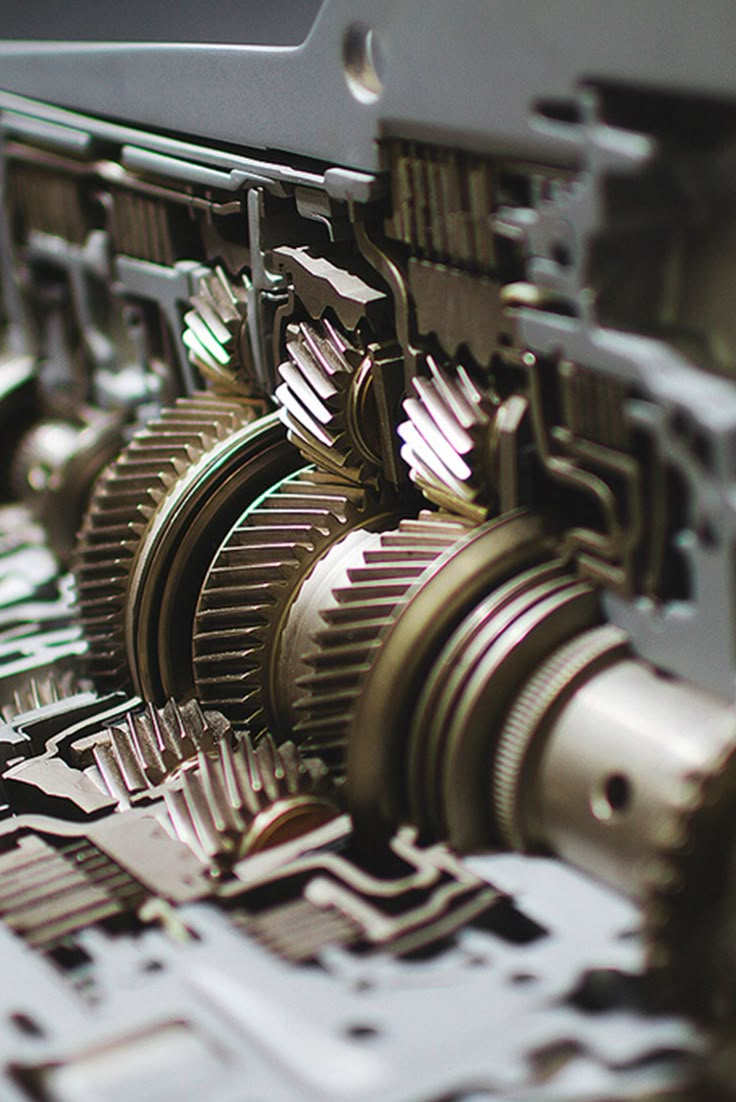Ford produced the AOD transmission, a robust overdrive automatic transmission, for a variety of uses

Strong 8k brings an ultra-HD IPTV experience to your living room and your pocket.
The AOD (Automatic Overdrive) transmission is a significant milestone in the evolution of automotive engineering, especially in the realm of fuel efficiency and highway cruising. Introduced by Ford in the 1980s, the AOD transmission represents the company’s early foray into overdrive automatic transmissions—a technology that would later become standard across the automotive industry. This article explores the history, technical design, advantages, limitations, and continued relevance of the AOD transmission.
Ford introduced the AOD transmission in 1980 as a replacement for the aging C4, C5, and FMX transmissions. The AOD was the first American-designed automatic transmission with a built-in fourth gear overdrive, designed specifically to meet the growing demand for better fuel economy in response to fuel crises in the 1970s.
The AOD made its debut in several full-size Ford vehicles, including the Lincoln Continental, Ford Thunderbird, and Ford LTD. It remained in production until 1993, when it was succeeded by the AODE (electronically controlled) and later the 4R70W transmissions.
The AOD is a four-speed automatic transmission that integrates an overdrive gear for improved fuel efficiency at highway speeds. Its gear ratios are:
1st gear: 2.40:1
2nd gear: 1.47:1
3rd gear: 1.00:1 (Direct Drive)
4th gear: 0.67:1 (Overdrive)
This overdrive gear allows the engine to run at a lower RPM during highway cruising, which reduces fuel consumption, engine wear, and noise.
The AOD is a hydraulically controlled transmission and uses a lock-up torque converter. It is essentially a hybrid of older transmission designs, combining parts from the FMX transmission with new innovations. A key feature of the AOD is the split-torque design, in which 60% of engine torque is delivered mechanically (direct drive) and 40% through the torque converter. This improves efficiency and reduces heat buildup.
The transmission case is made of aluminum and includes a detachable bellhousing, which allows compatibility with different engines.
The AOD's fourth gear is a true overdrive gear, providing a 0.67:1 ratio that significantly reduces engine RPM at highway speeds. This was particularly beneficial in V8-powered vehicles, which traditionally consumed more fuel.
Unlike many earlier automatics, the AOD features a torque converter with a lock-up clutch that engages in third and fourth gears. This eliminates slippage and boosts fuel efficiency.
Instead of a vacuum modulator or electronic control, the AOD uses a TV cable to regulate line pressure and shift timing. This cable must be adjusted precisely; otherwise, it can cause premature wear or transmission failure.
The AOD transmission was used extensively in a wide range of Ford vehicles, including:
Ford Mustang (1984–1993)
Ford Thunderbird (1980–1993)
Ford Crown Victoria (1980–1991)
Lincoln Town Car (1981–1992)
Mercury Grand Marquis
Ford F-Series trucks (1980s)
Because of its durability and relatively simple design, it remains popular among classic car restorers and hot rod builders.
The AOD's overdrive gear reduces engine speed on highways by nearly 30%, significantly improving fuel efficiency. This was a major selling point during its introduction.
Operating at lower RPM reduces engine stress and heat buildup, leading to increased longevity of engine components.
The AOD is relatively easy to service compared to modern electronically controlled transmissions. Its mechanical operation and lack of electronics make it attractive for DIY enthusiasts.
With modifications, the AOD can handle increased horsepower and torque, making it suitable for performance applications. Upgraded valve bodies, aftermarket gear sets, and torque converters are available to boost its capability.
Perhaps the most critical issue with the AOD is the TV cable adjustment. Incorrect adjustment can result in improper shift timing, slippage, and ultimately, transmission failure. Many AOD failures can be traced directly to TV cable problems.
While this may be an advantage for some, the lack of electronic shift control limits fine-tuning and adaptability. This was later addressed in the AODE and 4R70W successors.
Stock AOD transmissions can exhibit slow or soft shifting, especially when worn. Performance builds often include shift kits to firm up shift quality and improve responsiveness.
While durable, the stock AOD has limitations in handling high torque without reinforcement. High-performance or heavily modified engines often require internal upgrades.
In 1992, Ford introduced the AODE, an electronically controlled version of the AOD. The AODE retained the basic architecture but included several improvements:
Electronic control via the ECU
Better shift quality
Improved lubrication circuits
Stronger internal components
Later, the 4R70W, 4R75W, and 4R75E followed, refining the AOD design with improved gear ratios and digital enhancements. These transmissions remained in production into the 2000s.
The AOD enjoys strong aftermarket support, with parts readily available for rebuilds and upgrades. Common modifications include:
Performance valve bodies
Hardened input shafts
High-stall torque converters
Custom gear sets
Deep transmission pans for better cooling
Rebuilders often convert AODs for street/strip use or hot rods where overdrive is beneficial but electronic controls are undesirable.
While modern transmissions like the 6R80 or 10R80 offer more gears and advanced controls, the AOD remains a strong candidate in applications where simplicity, reliability, and cost are priorities. Its mechanical nature is a boon for classic car restorers who wish to maintain a period-correct but more efficient drivetrain.The AOD transmission marked a pivotal shift in American automotive engineering, bridging the gap between traditional 3-speed automatics and the modern overdrive systems we see today. With its robust construction, mechanical simplicity, and fuel-saving benefits, the AOD left a lasting legacy in both Ford’s history and the broader transmission world.
While newer technologies have surpassed it in terms of efficiency and control, the AOD remains a respected and viable option for many enthusiasts, restorers, and builders who value its blend of old-school mechanics and modern practicality. Properly maintained and tuned, an AOD can offer years of reliable performance—on the drag strip, highway, or the open road.
Note: IndiBlogHub features both user-submitted and editorial content. We do not verify third-party contributions. Read our Disclaimer and Privacy Policyfor details.


